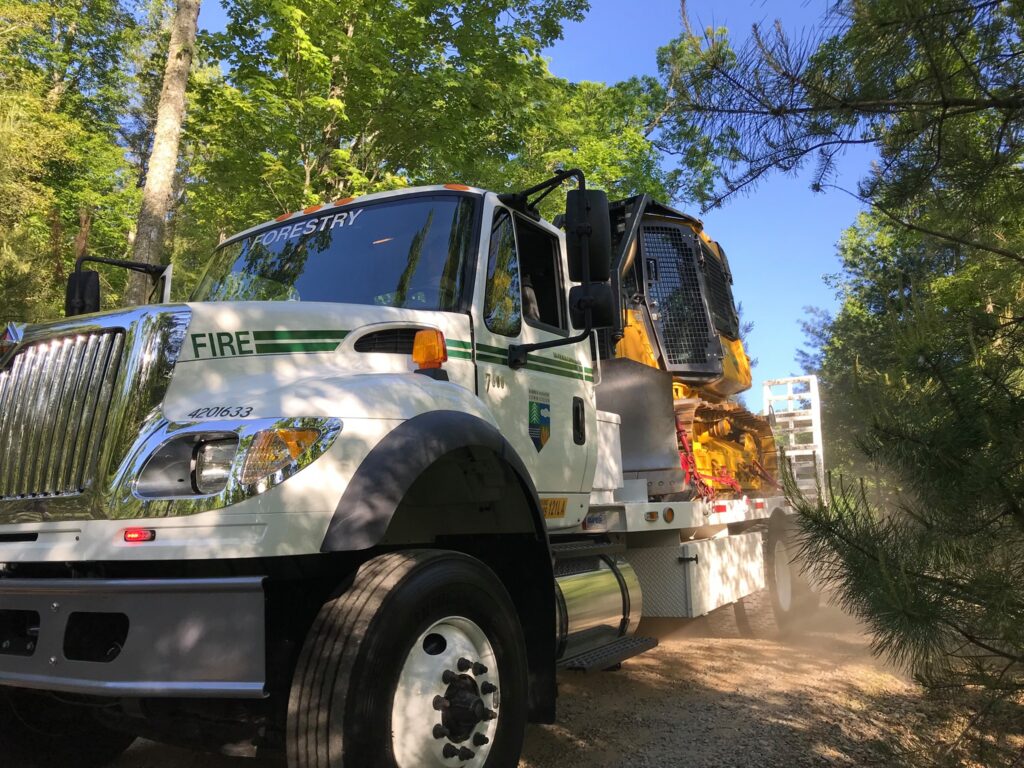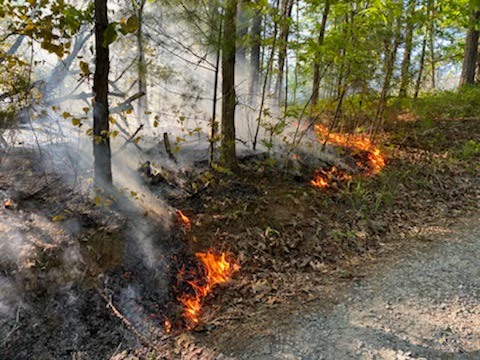
Wildfire Prepardness

By Amber Camacho
Where there’s smoke, there’s fire… and we have a plan for what to do in the case of one! Emergency preparedness can save human lives, structures, and of course, the chimpanzees at Project Chimps. Wildfire preparedness is just one of the disasters we make certain we are ready for.
At Project Chimps, the staff are offered a wide variety of educational resources to ensure we are on top of our game when it comes to emergency response. We take online classes, in person trainings, and run routine drills. Sometimes the drills are serious and other times they are set up as fun games. This keeps us motivated to keep learning and hits all the different learning styles.
I recently participated in an emergency preparedness seminar, and it got me to thinking about the plethora of emergency protocols we follow at the sanctuary and how plans are put into action in the case of an emergency. It also gave me pause to assess how prepared I am at home for emergencies. When I did my personal audit, I realized I had a little work to do.
It’s national fire prevention week and my focus right now is on fire preparedness.
Smoke is in the Air
Fires—or smoke—are a common occurrence everywhere, even around Project Chimps. In our area, controlled burns are a common occurrence for property owners to be able to clear brush. Most controlled burns start early in the day between predicted rain storms so the ground is nice and wet and the property owner can monitor their fire pile. Permits for these burns must be issued and that allows folks like us to to call in on a hotline to confirm if the smoke we see or smell is associated with a permitted burn.
When smoke is identified in or around the sanctuary, the first thing we do is ensure it’s supposed to be there, like in the controlled burn scenario above. If its a dry day, or late in the day, or we have verified there is no permit for the source of the smoke, we go looking for the source and put it out if it’s safe and possible to do so. If it’s a large fire, we call 911 and let the firefighters do their job.
The Fire Next Door

Back in May, some of our staff were just wrapping up their day and had stayed after hours to closeup. And it’s a good thing they did! While putting tools away, someone smelled smoke. It was late in the day and a very dry week; a permitted burn could be ruled out immediately. In response to their training, the three staffers dropped what they were doing and spread out to find the source of the smoke.
The Fire
They discovered a small brush blaze in the cemetery next to our sanctuary. They tapped into their wildfire preparedness training. While one person called 911 and stayed with the fire the others gathered up extinguishers and attempted to keep the edges of the fire from spreading further. A notification was sent out to all other staff to be on alert should the situation get bigger and require more hands-on support. A fire truck came on site and patrolled the area where the chimps lived to ensure no embers jumped the control line.
The team’s swift and professional response to the fire was due to their own capabilities, but the confidence came from the protocols we have in place and the drills that we run on a regular basis.
I got to speak with them about the incident and they say our Emergency Preparedness protocols played a huge part. If you missed Facilities Specialist Rodney talk about the fire and our response to it, you can watch it here in his recent webinar.
Not only do we run drills, but we have fun with them! During a recent all-staff scavenger hunt, our participants relied had to demonstrate how to use a fire extinguisher. The results were hilarious, but also instructive to ensure everyone knew the proper way to use one! Do you?
Wildfire Preparedness for You
Are you prepared for fires? The following fire safety tips are from RedCross.org:
- Install smoke alarms on every level of your home, inside bedrooms and outside sleeping areas.
- Test smoke alarms every month. If they’re not working, change the batteries.
- Talk with all family members about a fire escape plan and practice the plan twice a year.
- If a fire occurs in your home, GET OUT, STAY OUT and CALL FOR HELP. Never go back inside for anything or anyone.
